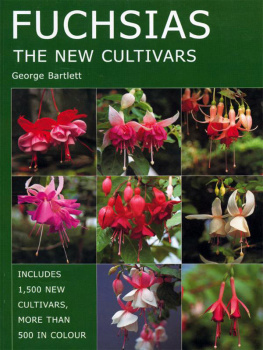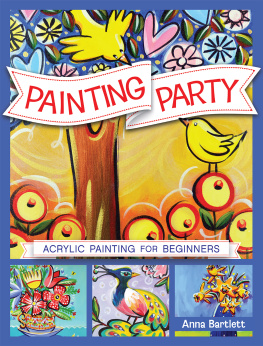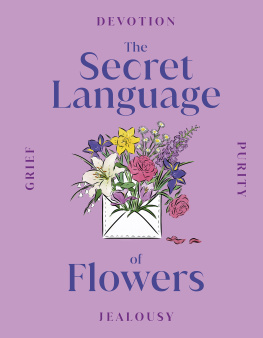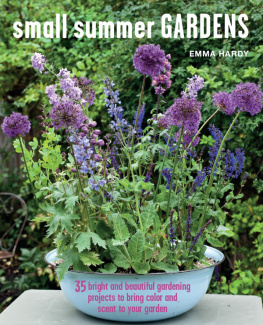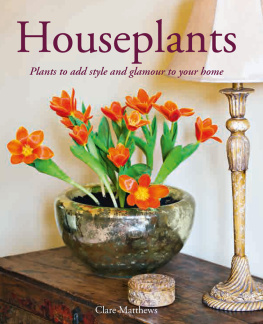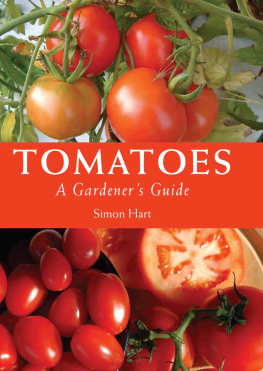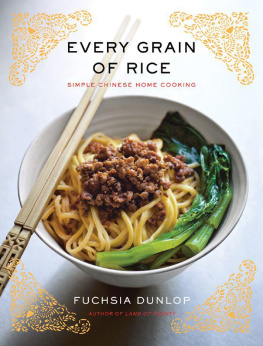Fuchsias
THE NEW CULTIVARS
George Bartlett

The Crowood Press First published in 2000 by The Crowood Press Ltd, Ramsbury, Marlborough, Wiltshire, SN8 2HR www.crowood.com This e-book edition first published in 2011 The Crowood Press 2000 All rights reserved. This e-book is copyright material and must not be copied, reproduced, transferred, distributed, leased, licensed or publicly performed or used in any way except as specifically permitted in writing by the publishers, as allowed under the terms and conditions under which it was purchased or as strictly permitted by applicable copyright law. Any unauthorised distribution or use of this text may be a direct infringement of the authors and publishers rights, and those responsible may be liable in law accordingly ISBN 978 1 84797 368 9 Line illustrations by Cy Baker.
Acknowledgements The author would like to thank most sincerely those specialist fuchsia nurseries kind enough to send him copies of their catalogues from which much of the information and descriptions were obtained. The names and addresses of these nurseries are printed at the back of this book.
Preface
As a result of the great success of the first book
Fuchsias A Colour Guide, it was decided to produce a second volume incorporating many of the newer types of fuchsias.
Preface
As a result of the great success of the first book
Fuchsias A Colour Guide, it was decided to produce a second volume incorporating many of the newer types of fuchsias.
It is in a way unfortunate that books such as this are virtually out of date before they are even printed as more and more new cultivars are introduced each year. However, we can but try our best to keep growers of fuchsias informed about many of the newer cultivars introduced during the last few years. As readers will appreciate, many of the descriptions contained within this volume are those which have been used by the nurseries in their catalogues. As such it is not possible to obtain all the facts and information that we desire. Every effort has been made to get full information but there are a number of plants where it has not been possible to ascertain the name of the raiser or the date upon which it was first introduced. If such omissions cause any offence, I apologize most sincerely and would be very grateful if the information could be passed to me so that it can be included in subsequent printings.
One of the questions most frequently asked concerns the availability of the various plants. Following the descriptions, I have included codes for the nurseries from whose catalogues the information was obtained (see Nursery Addresses 2000). It is quite possible that such nurseries will, after a few years, no longer be stocking the particular plant you require, but I have no doubt that they would supply you with information about where to obtain such a plant, if requested, or suggest a suitable similar cultivar. The Author is extremely grateful to all the nurseries who sent their catalogues and particularly to those who supplied plants so that photographs could be taken. Without such assistance the production of a book such as this would have been impossible. The response to the first book was so complimentary that I am fearful lest the standard of this second book does not match the first.
I do not profess to be a photographer I rely upon the camera to do the thinking and the focusing for me and concentrate purely on the making of the picture. I am delighted, however, to have had the opportunity once again of sharing my love of the fuchsia with you. I still maintain that the growing of fuchsias is a hobby that should be enjoyed and have no hesitation in asking you once again to HAVE FUN WITH YOUR FUCHSIAS. George E. Bartlett
Introduction
History
It seems almost impossible to believe that fuchsias have only been known to the modern world since 1703; and it was not until the 1820s that the nurserymen and hybridists realized the potential of these plants and started to breed new plants from the available species. It is quite amazing that such a vast quantity of cultivars, of so many differing colours and form, has become available to us in so short a time.
Approximately 100 different species have been identified to date. All are native to the southern hemisphere, most growing in the countries of South America although one group is native to New Zealand. As it is from these species that all our modern cultivars have emanated, I feel that it is important to tabulate them giving the areas within which they are found (see below). All the Species of FuchsiasSection 1. Quelusia (Argentina, Brazil and Chile)F. campus-portoiF. magellanica var. macrostemaF. coccineaF. magellanicaF. regia var. regiaF. magellanica var. albaF. regiaF. regia var. alpestrisSection 2. Fuchsia (Andes and Central America)F. abruptaF. andreiF. ayavacensisF. canescensF. ceraceaF. concertifoliaF. collataF. crassistipulaF. decussataF. dependensF. fontinalisF. gehrigeriF. harlingiiF. hirtellaF. hirtellaF.
IlewelyniiF. macropetalaF. macrostigmaF. mathewsiiF. orientalisF. pilosaF. pringsheimiiF. rivularisF. sammartinaF. scherffianaF. simplicaulisF. sylvaticaF. triphyllaF. venustaF. vulcanicaF. ampliataF. austromontanaF. bolivianaF. caucanaF. cohabambanaF. coriacifoliaF. corymbifoliaF. cautrecasiiF. denticulataF. ferreyraeF. furfuraceaF. glaberrimaF. hartwegiiF. lecbmaniiF. loxensisF. macrophyllaF. magdalenaeF. nigricansF. ovalisF. petiolarisF. polyanthaF. putamayensisF. sanctae-rosaeF. scabriusculaF. sessilifoliaF. steyermarkiiF. tinctaF. vargasianaF. verrucosaF. wurdackiiSection 3 Kierschlegeria (Chile)F. lycioidesSection 4 Skinnera (New Zealand and Tahiti)F. colensoiF. exorticataF. procumbensF. cyrtandroidesF. perscandensSection 5 Hemsleyella (Bolivia and Venezuela)F. apetalaF. chlorolobaF. huanucoensisF. insignisF. membranaceaF. pitaloensisF. tilletianaF. cestroidesF. garleppianaF. inflataF. juntasensisF. nanaF. salcifoliaF. tunariensisSection 6 Schuffia (Central America and Mexico)F. arborescensF. paniculataSection 7 Encliandra (Central America and Mexico)F. bacillarisF. encliandra ssp encliandraF. encliandra ssp tetradactylaF. micropbylla ssp hemsleyanaF. micropbylla ssp micropbyllaF. micropbylla ssp mintifloraF. parvifloraF. thymifolia ssp minimifloraF. thymifolia ssp tbymifoliaSection 8 Jimenezia (Costa Rica and Panama)F. jimeneziaSection 9 Ellobium (Central America and Mexico)F. fulgensF. splendensF. decidua
Composts
What is the right type of compost to use when growing fuchsias? This is a question asked time and time again when visiting major shows. decidua
Composts

